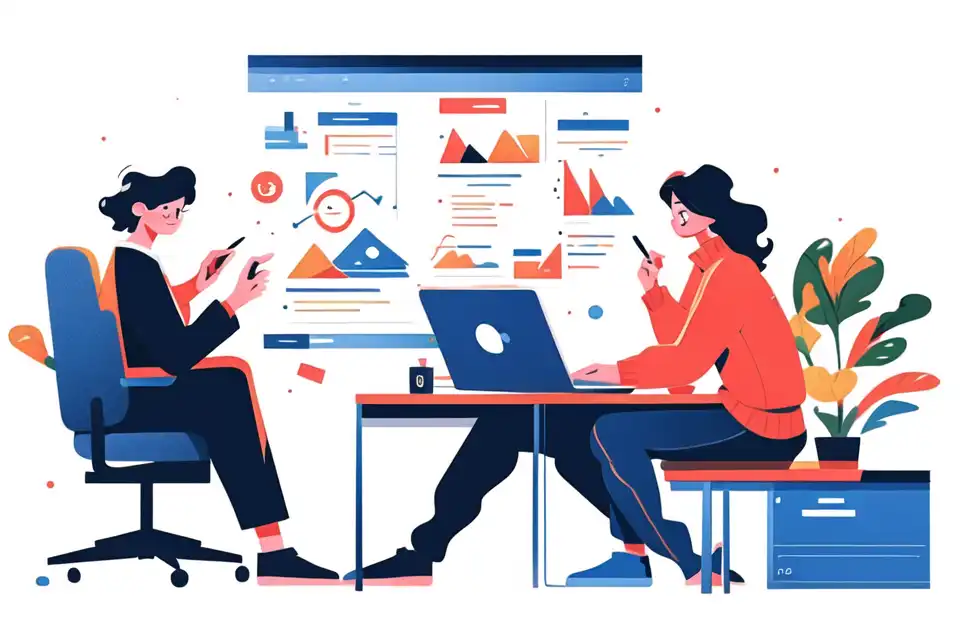Feasibility Study for Design and User Experience Teams
Explore feasibility study for design and user experience teams, ensuring efficiency and successful project management outcomes.
Try Lark for Free
In today's continuously evolving market landscape, the significance of design and user experience teams cannot be overstated. As these teams strive to deliver engaging and intuitive solutions, it becomes imperative to comprehensively evaluate the feasibility of their design concepts. By conducting feasibility studies, design and user experience teams can proactively mitigate risks, optimize resource allocation, and streamline the decision-making process.
Leverage Lark for project management within your team.
Understanding feasibility study
Feasibility studies encompass a systematic and structured approach to evaluating the practicality and viability of a proposed project or initiative. When tailored to design and user experience teams, these studies serve as a strategic tool to assess the plausibility of executing innovative design concepts and ensuring their alignment with business objectives.
Benefits of feasibility study for design and user experience teams
Feasibility studies offer an array of benefits specifically tailored to the needs of design and user experience teams. Such studies are vital in ensuring the holistic success of a project and enabling a comprehensive understanding of the potential challenges and opportunities within the design and user experience domain.
Benefit 1: Increased Efficiency and Productivity
Feasibility studies pave the way for increased efficiency and productivity within design and user experience teams by enabling proactive identification and resolution of potential challenges. By laying the groundwork for informed decision-making, these studies minimize unnecessary delays and optimize workflows.
Benefit 2: Enhanced Decision Making and Risk Mitigation
Through feasibility studies, design and user experience teams gain the ability to make informed decisions based on comprehensive analyses, thereby mitigating potential risks. By addressing challenges at the initial stages, teams can streamline their processes and enhance the overall success rate of their projects.
Benefit 3: Optimal Resource Allocation
Conducting feasibility studies facilitates optimal resource allocation, ensuring that design and user experience teams utilize their resources effectively. By gauging the practicality and viability of design concepts, teams can allocate their resources in a manner that maximizes the impact of their projects.
Steps to implement feasibility study for design and user experience teams
Navigating the process of implementing feasibility studies for design and user experience teams involves a strategic and structured approach. The following steps outline a comprehensive guide to effectively integrate feasibility studies into the workflow of these teams.
Step 1: Initial Project Evaluation
- Define the objectives, scope, and anticipated outcomes of the design and user experience project.
- Conduct a preliminary assessment of the project's alignment with organizational goals and user expectations.
- Identify the key stakeholders and establish clear communication channels to gather varied perspectives.
Step 2: Market Analysis and Research
- Conduct extensive market research to understand prevalent trends and user preferences within the industry.
- Analyze the competitive landscape to identify potential challenges and opportunities for the design and user experience teams.
- Gather user feedback and preferences to inform the design process and validate conceptual ideas.
Step 3: Technical Feasibility Assessment
- Assess the technical requirements and constraints associated with implementing the proposed design concepts.
- Identify potential technological bottlenecks and explore feasible solutions to address them.
- Evaluate the compatibility of the design concepts with existing technological frameworks and platforms.
Step 4: Financial Viability Examination
- Create a comprehensive budget plan detailing anticipated costs and resource requirements for the design and user experience project.
- Conduct a thorough cost-benefit analysis to gauge the financial viability of the proposed design concepts.
- Identify potential cost-saving measures and alternative resource allocation strategies.
Step 5: Risk Analysis and Mitigation
- Identify potential risks and challenges that may impact the successful implementation of the design and user experience project.
- Develop proactive mitigation strategies to address identified risks and establish contingency plans.
- Continuously monitor and reassess the risk landscape to proactively address emerging challenges.
Learn more about Lark Project Management for Teams
Common pitfalls and how to avoid them in design and user experience teams
Despite the proactive nature of feasibility studies, design and user experience teams may encounter common pitfalls that can hinder the successful execution of their projects. By understanding these pitfalls and adopting preventive measures, teams can effectively navigate potential challenges.
Pitfall 1: Inaccurate Assumptions and Overlooking User Needs
Inaccurate assumptions and a failure to prioritize user needs can significantly impact the success of design and user experience projects. By actively engaging with end users and leveraging user-centric design principles, teams can validate their assumptions and integrate user feedback into the design process.
Pitfall 2: Underestimation of Design Complexity
Underestimating the complexity of design concepts can lead to delays and suboptimal outcomes. Design and user experience teams should conduct thorough analyses of design complexity and scalability, leveraging prototyping and iterative design processes to comprehensively assess the feasibility of their concepts.
Pitfall 3: Ignoring Competitive Landscape and Market Trends
Disregarding the competitive landscape and evolving market trends can hinder the relevance and impact of design and user experience initiatives. By staying abreast of industry trends and conducting regular competitive analyses, teams can align their design concepts with market expectations and emerging trends, ensuring their projects remain contemporary and competitive.
Learn more about Lark Project Management for Teams
Leverage Lark for project management within your team.








